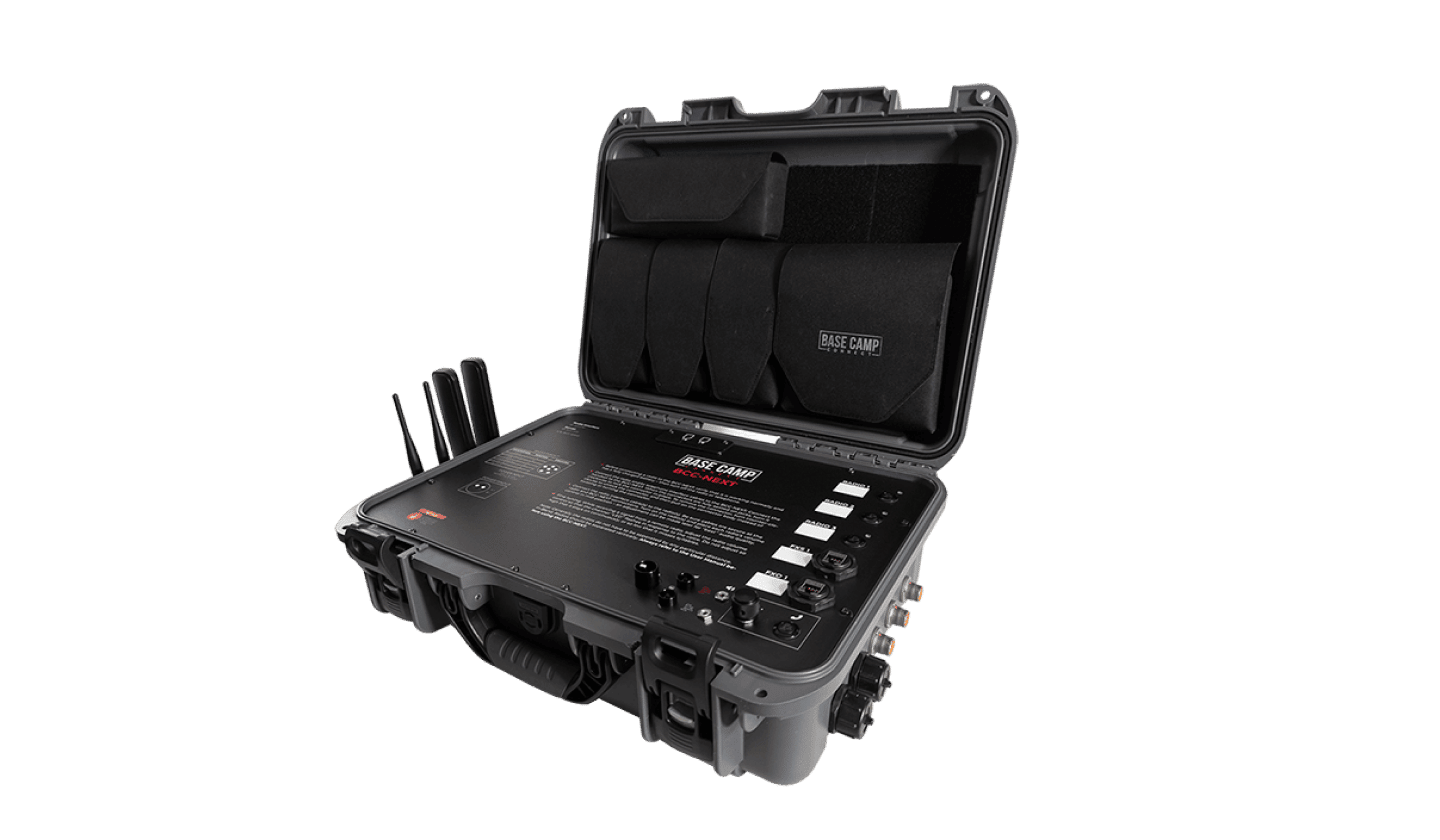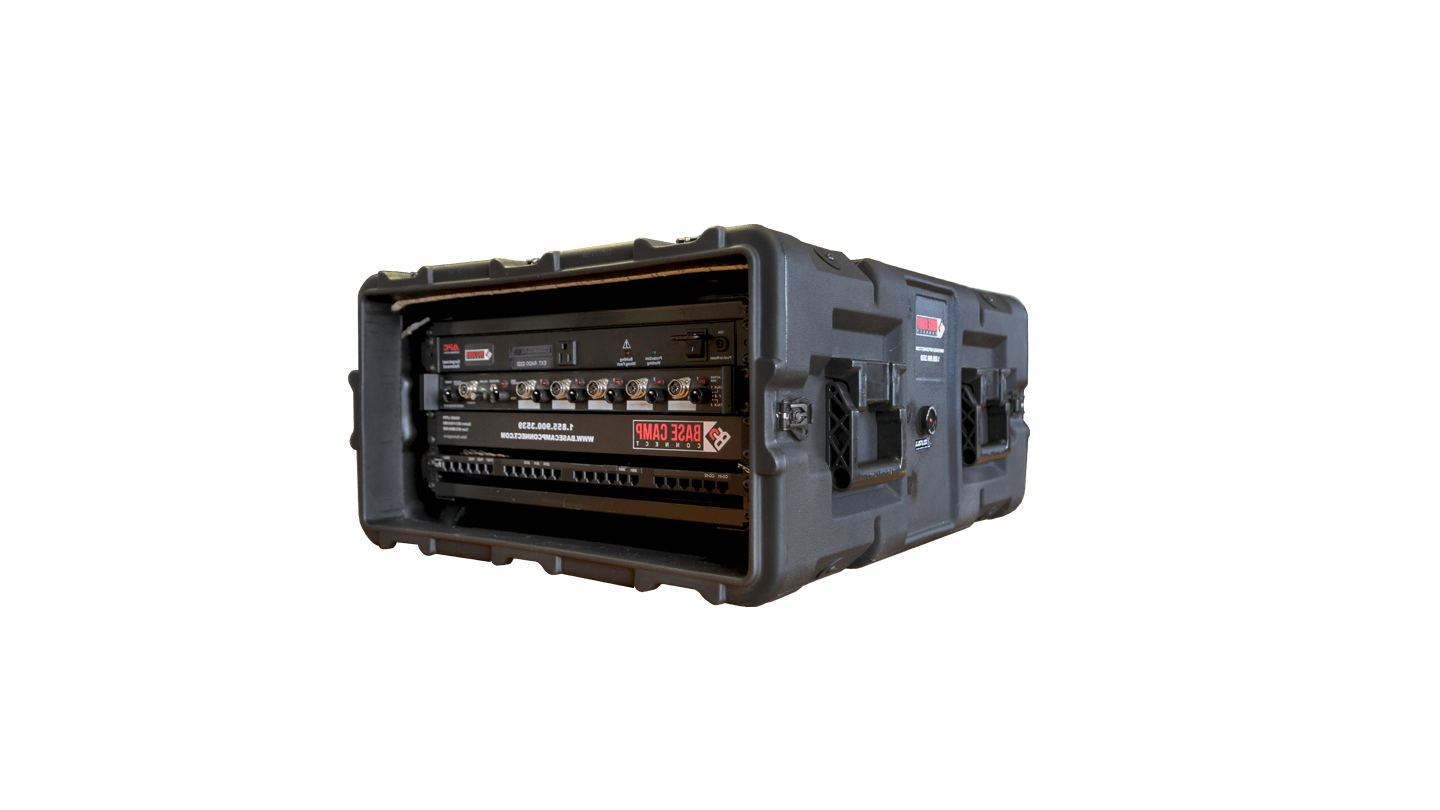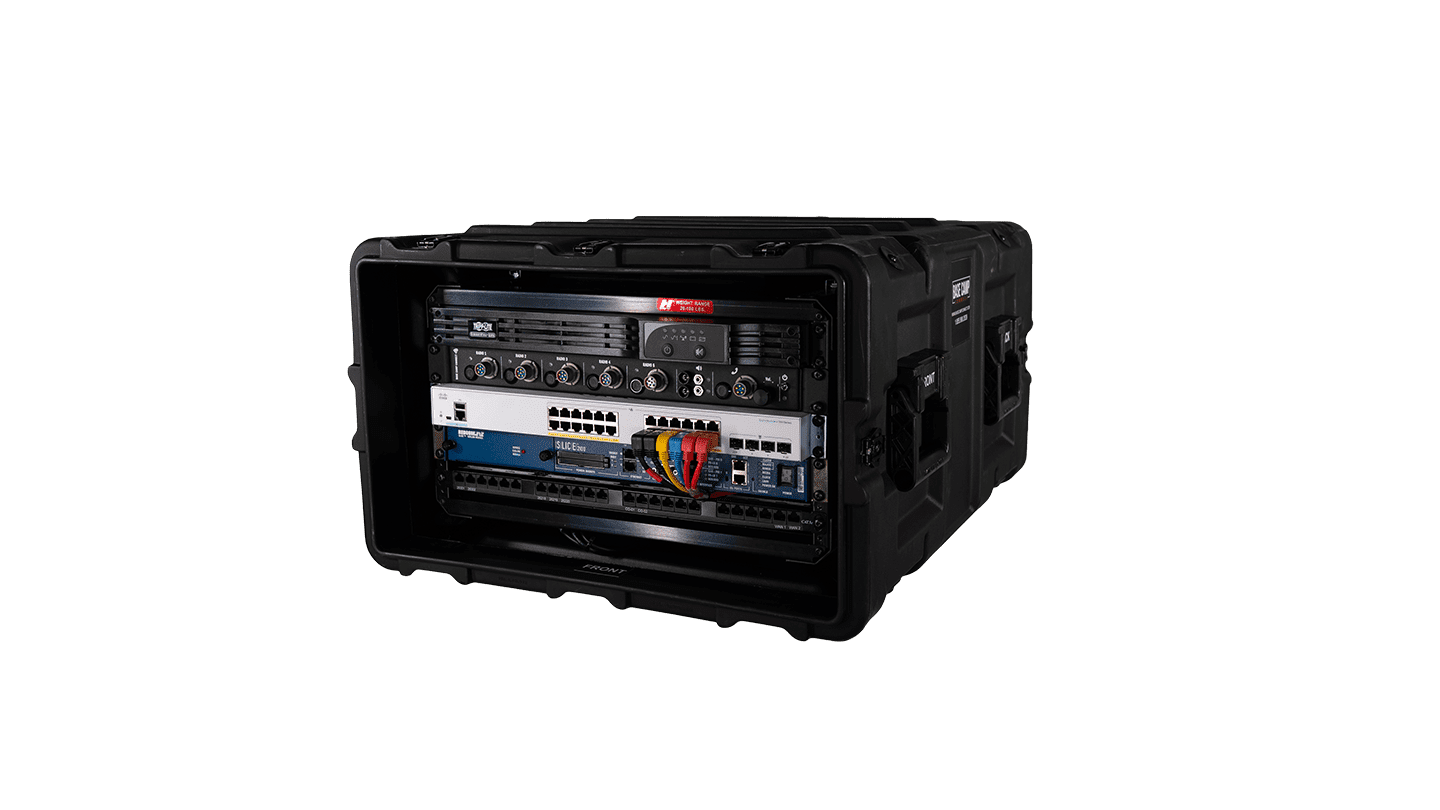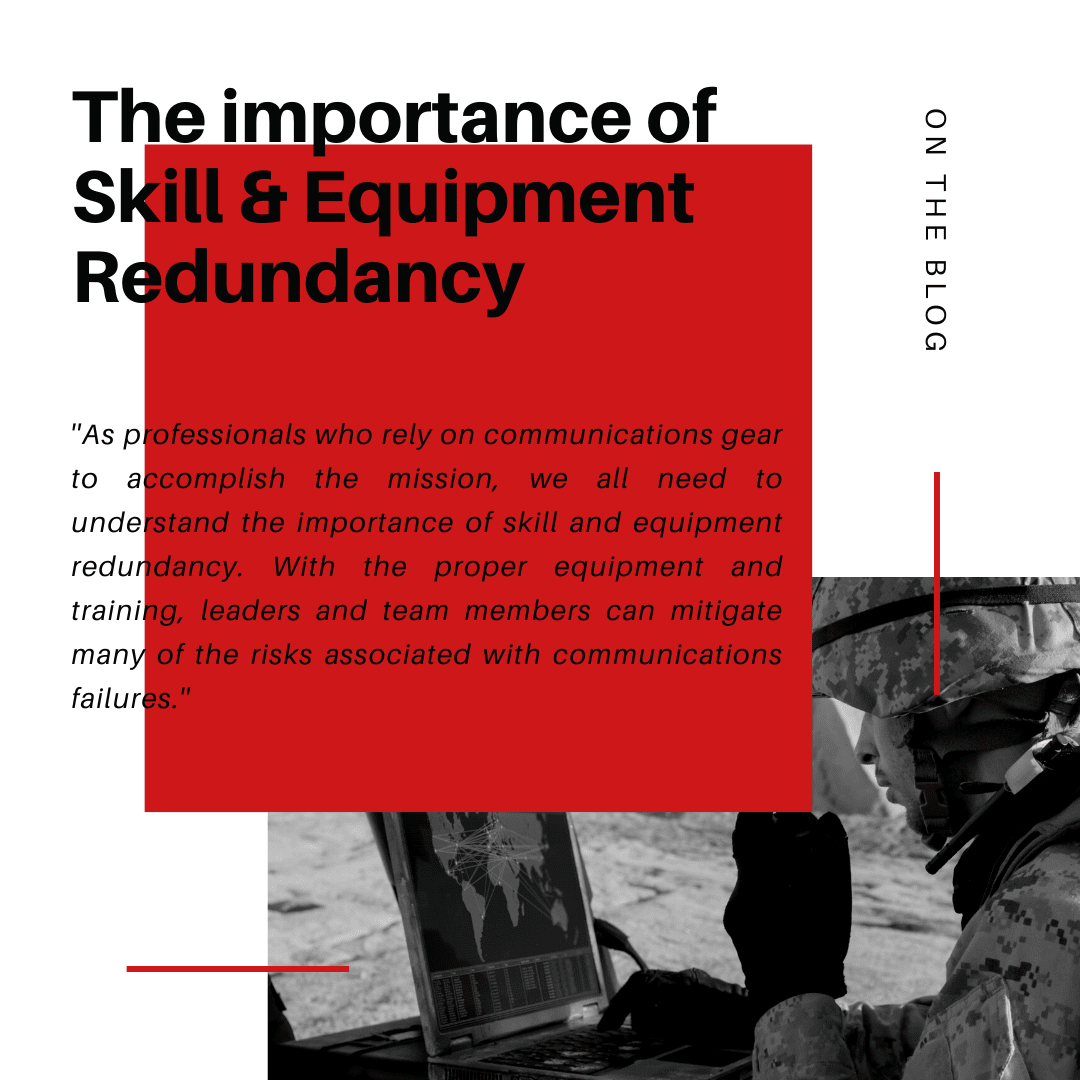Almost all military, public safety, and search & rescue professionals have had difficulty with communications gear. Common challenges can arise from relying on a single piece of equipment that unexpectantly fails or a lack of trained personnel to utilize available alternative equipment.
In tactical situations, communications are often the lifeline to reinforcements or additional support, such as artillery or air strikes. For non-tactical conditions, having working communications may be the only chance of saving someone in need of emergency medical attention. The problems caused by communications challenges can lead to frustration and, in extremes, the loss of life.
As professionals who rely on communications gear to accomplish the mission, we all need to understand the importance of skill and equipment redundancy. With the proper equipment and training, leaders and team members can mitigate many of the risks associated with communications failures.
What is Skill/Equipment Redundancy?
As a young second lieutenant in the Marine Corps, I once participated in a joint firing exercise. Part of the multi-day operation included testing communications gear the Marine Corps was considering purchasing from a government contractor. Testing and evaluating the equipment was an essential part of the training exercise.
While setting up the communications gear, the contractor’s representative could not get the system to work. They troubleshooted the issues for several hours unsuccessfully. There was no backup system, and the representative was not an “expert” in troubleshooting the product. As a result, the gear was not a part of the exercise, and the contractor likely lost a significant government contract with the Marine Corps.
Situations like the one I experienced are avoidable by implementing a redundancy of skills and equipment.
Skill redundancy can be thought of in terms of team member cross-training. Communications gear often requires specialized training to set up and operate. If your team has a single individual capable of using specific communications gear, you have a potential weak point in capabilities.
Equipment redundancy mitigates mechanical failures or technical issues. This level of protection can be accomplished with multiple units of the same communications gear. It can also be achieved using different equipment that offers the same or similar capabilities as the primary unit.
How to Build Skill & Equipment Redundancy
When it comes to building skill redundancy, cross-training is the name of the game. Sometimes you are fortunate enough to work with equipment suppliers who run train-the-trainer courses. These periods of instruction are invaluable. Seek companies with this service first. In other cases, you will be left with little more than a manual to help guide you through the operation of new gear.
Regardless of which level of support you have, it is crucial that every member of a team can operate the equipment they will rely on to accomplish the mission. Perhaps even more critical is ensuring the team can troubleshoot any issues.
Take the time to train as many people as possible on new communications gear. If you have benefited from a train-the-trainer course, make sure you set up in-house training secessions with your newly created trainer soon after completing the train-the-trainer course. Doing this will ensure the information is fresh in their mind when teaching others in your organization.
Combining classroom and hands-on training is vital. Talking about communications equipment is not the same as physically using it. Take the time to cover the material in class and through individual hands-on engagements.
Finally, remember to have a plan for keeping the skills sharp. Schedule refresher courses as needed with a frequency of at least once a year.
Equipment redundancy is achievable in one of two methods. First, you can purchase additional units of the same equipment. Having a spare unit is often the most expeditious solution when there is an equipment failure. This, of course, is not always feasible.
A second option is to have other equipment that has similar capabilities. For example, a typical military squad may carry field radios, individual team member radios, and a secure satellite phone to talk with higher units. Each device can reach other assets but utilize different channels. If the squad enters a dead zone for the field radio, they can still communicate with their other radios or secure satellite phones.
Map out what your communications needs are and identify what gear supports those needs. If a single piece of equipment is listed for one of the unit’s communications needs, add a redundant device to that need.
The Benefits of Skill and Equipment Redundancy
There are numerous benefits to developing communications redundancy within your organization. Let’s briefly touch on a few. This snapshot will hopefully encourage you to investigate implementing or strengthening communication redundancies within your team.
Improved flexibility is one significant benefit of skill and equipment redundancy. Operations that rely on individual skill sets or specific communications equipment can become a limiting factor in a unit’s effectiveness. When multiple people have been trained in a skill or when back up units can offset an equipment failure, the team is more flexible.
The value of each team member increases as they are taught new skills. This has the dual benefit of giving leaders more options in how teams are organized and allows individuals to grow and maintain interest. An investment in training new skills helps everyone.
As team strength grows, either through redundant equipment or added skillsets, the unit’s synergies improve. This is most often seen through greater efficiencies related to typical operations the team supports. Tasks are completed quicker, and issues are resolved faster when communications redundancy is employed.
Communications equipment is a force multiplier. From battlefields to search & rescue operations our ability to interact with organic resources and resources outside our organization are dependent on reliable communications.
A lack of redundancy in gear and skillsets can quickly make an otherwise successful team ineffective. Leaders and team members should seek to eliminate any single points of failure. Cultivating a robust redundancy in communications equipment and the skills surround the use of communications gear is essential. With communications redundancies a part of standard operating procedures, you will almost never become ineffective due to communications gear failures.














